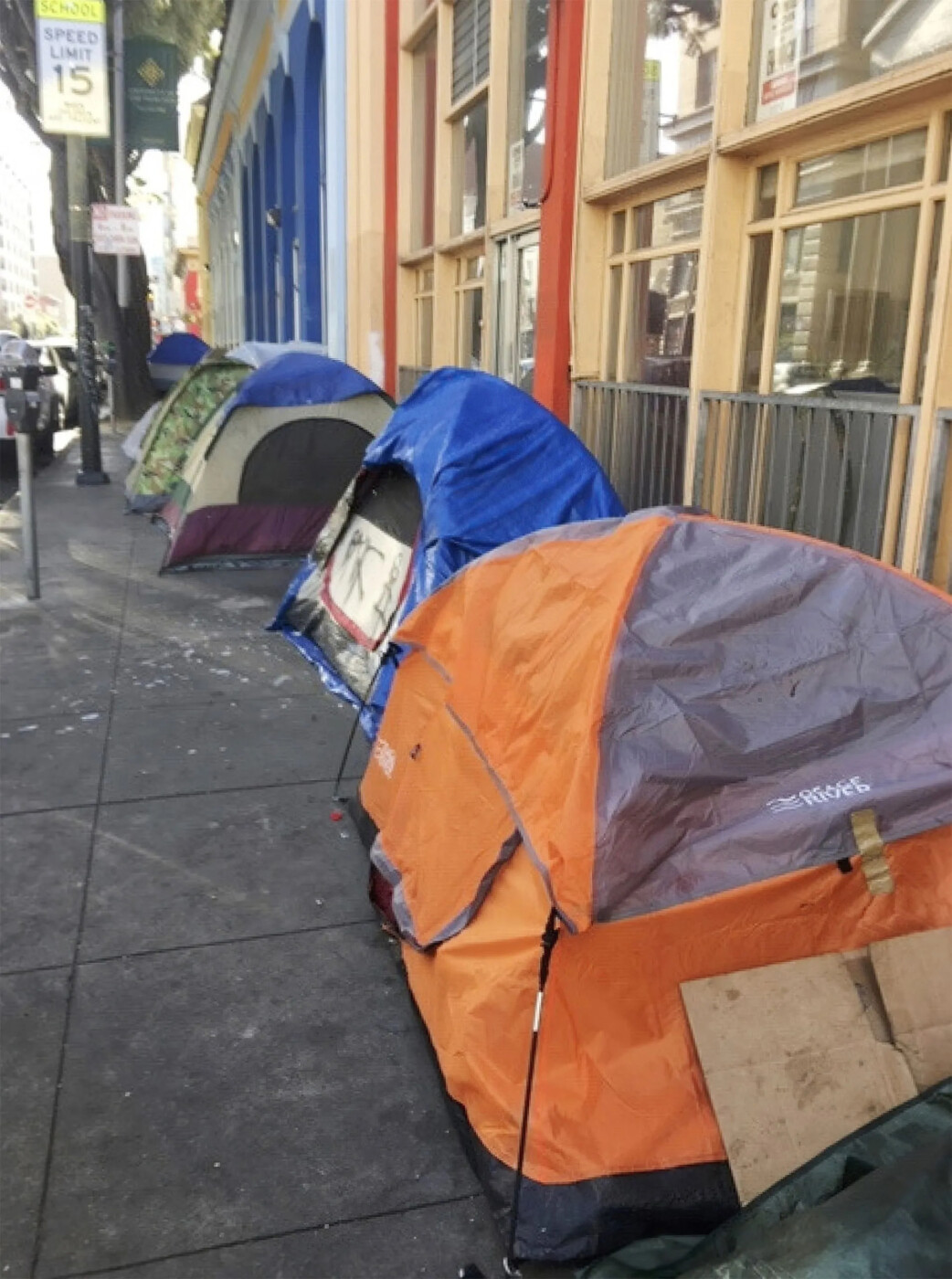San Francisco Mayor London Breed is touting this year’s preliminary Point in Time count numbers, which seem to show that the number of people who are unhoused in the city has reached its lowest level in 10 years. But the count also shows an overall increase in homelessness across several metrics.
Point in Time counts, also referred to as PIT counts, are generally taken at the beginning of the year and are a snapshot census taken in one day of a county’s unhoused population.
Breed is attributing the downward trend of people living on the street to expanded access to shelter and housing.
The number of people living in shelters has risen 39 percent since 2019, according to the San Francisco Department of Homelessness and Supportive Housing, or HSH.
“This corresponds with a 28 percent increase in available shelter beds since 2019,” reads the report.
According to Breed’s office, the PIT count that was taken on Jan. 30 found that fewer than 3,000 people were living on the streets, or in tents or structures, a 13 percent drop over 2022’s count and the “lowest level since before the 2015 PIT Count.”
San Francisco’s data is better than overall homeless trends nationally, which rose 15 percent between 2019 and 2023.
The mayor also said that April’s quarterly tent count showed 41 percent fewer tents than July of 2023, “the lowest rate that San Francisco has seen in five years.”
The data regarding youth homelessness was also positive. Unsheltered homeless youth, which are designated as unaccompanied minors and young adults under the age of 24, decreased 9 percent between 2022 and 2024. The number of sheltered youth rose a whopping 87 percent in that same period of time.
An increase in housing for unsheltered people has made a dent in these numbers for sure, but Breed’s office leaves out other preliminary data from the 2024 count.
According to HSH, this year’s PIT count shows an increase in total homelessness of 7 percent since 2022, from 7,754 people to 8,328. Chronic homelessness has also increased by 9 percent over 2022.
Family homelessness has had a giant increase, with a 94 percent jump since 2022. However, the city says this is due to increased efforts to better identify homeless families this year. Of these families, 90 percent were found to be living in vehicles.
Despite the numbers, HSH officials said San Francisco’s data is “better than national trends in overall homelessness,” citing a 15 percent increase in homelessness nationally between 2019 and 2023.
The post San Francisco sees decrease in people living on streets amid overall rise in homelessness appeared first on Local News Matters.
